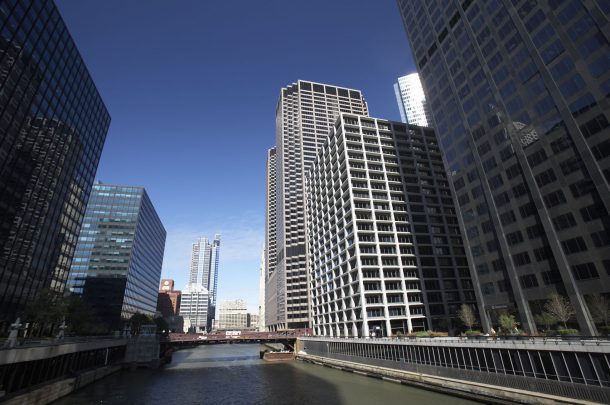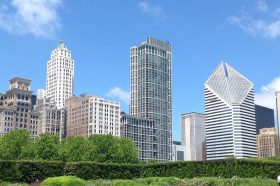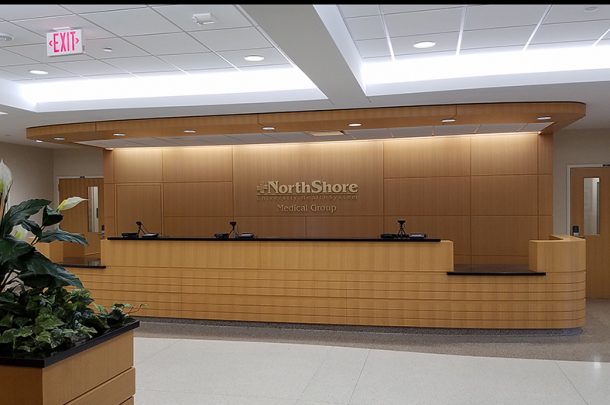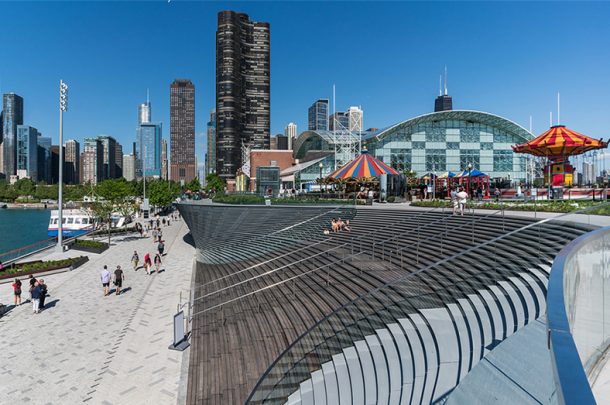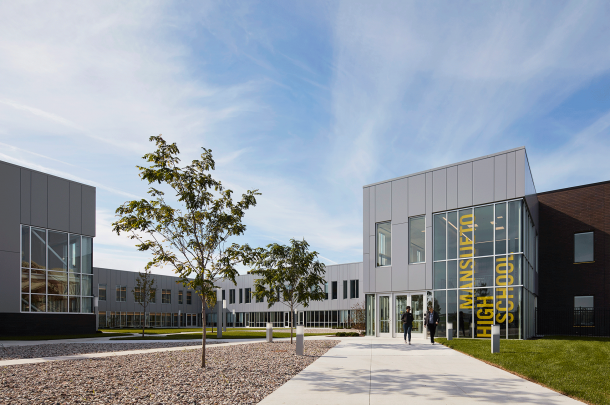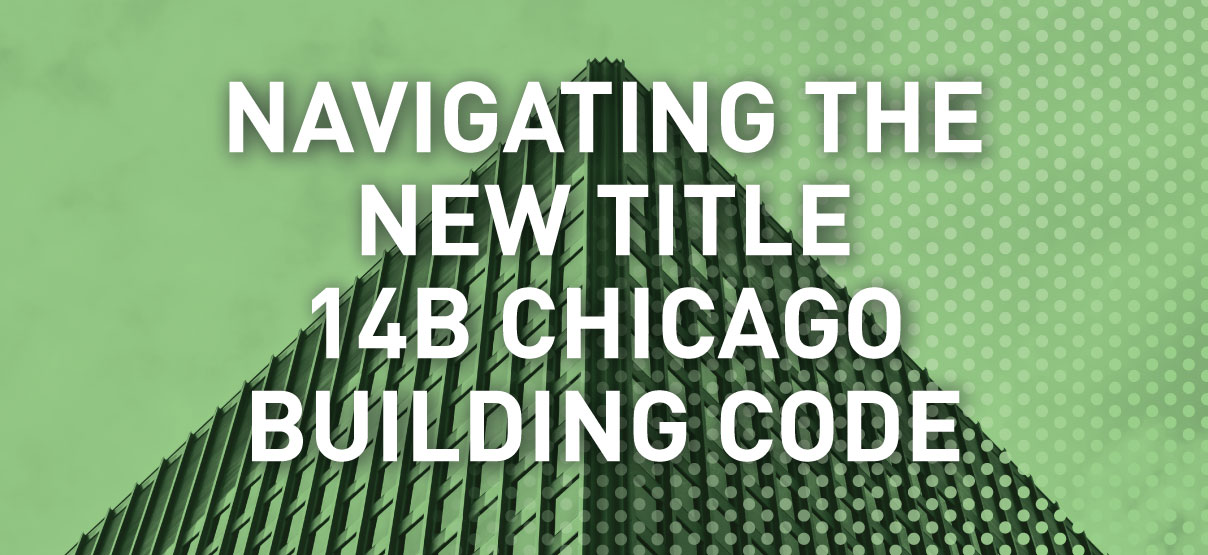
It all began in 1875, a few years after the Great Chicago Fire, when the City of Chicago established its first Building Code. This code was created to minimize future fires and address the spread of diseases. While it served its purpose for several years, a large overhaul of the content took place in 1949. However, since then only minor changes have been made. For the past 70 years, Chicago has had its own unique code that has troubled many designers and failed to address new technologies and materials that were being installed. A long overdue revision was needed, and in late 2015 there were talks of updating the standards once again. The ‘new’ code brings the Chicago Building Code into the 21st century by incorporating multiple sections of the 2018 International Building Code (IBC), and reorganizing it to match the IBC layout and section numbering, which allows for easier updates when the Code cycle updates are issued.
The major overhaul of the Chicago Codes will be updated in three phases:

Phase 1 was adopted in March 2018 and consisted of electrical revisions. Phase 2 was adopted in April 2019, is underway now, and will be enforced August 1, 2020. The Chicago Construction Codes consists of the building (new construction), accessibility, energy conservation, existing buildings, rehabilitation code, conveyance device, fuel gas codes and others. Phase 3 will incorporate mechanical ventilation, refrigeration, natural gas, fire prevention, and plumbing, with plans to adopt in 2021.
Here’s a closer look at some of the key implementation milestones:
- April 10, 2019: Phase 2 Building Construction Codes adopted
- June 1, 2019: The International Energy Conservation Code placed into effect
- December 1, 2019: New projects started to use the new code
- December 1, 2019: New accessibility code enforced
- January 1, 2020: Sprinklers are required in residential buildings with four or more units
- July 31, 2020: Alternative Plumbing Materials Pilot Program extended
- August 1, 2020: All projects submitted for permit require the new codes
The major changes of modernizing the Chicago Building Code involve bringing Chicago up to the National standard. Many changes are life safety requirements, assuring that Chicago buildings are the safest for its residents. Also, with the new regulations, construction costs are more economical and new technologies are easier to be incorporated. Below are our picks for the biggest changes that may affect your current or future sites:
Top 10 Chicago Building Code Updates
- Building Height Clarification – The definition is more in line with the zoning code which states, “Building Height shall be the vertical distance from grade plane to the mean elevation of the highest roof plane.” Building Height is not the same as mean roof height. And, yes there are exceptions.
- Revised Accessibility Standards – The updated references comply with the State and National standards. The new code references ANSI A117.1-2009, but is not a ‘safe harbor’ yet. An Area of Refuge is no longer required, but two-way communication is.
- Updated Energy Efficiency and Sustainable Design Requirements – The State of Illinois adopted the 2018 IECC on June 1, 2019 while Chicago followed suit with Illinois-specific amendments. To comply with the IECC 2018, there are eight additional energy efficiency packages that need to be reviewed and at least one will need to be incorporated within the design. Plus, don’t forget the new compliance forms that need to be submitted – Primera can help you understand these energy codes.
- Seismic Design Requirements, yes Chicago is not exempt – All critical category buildings: high rise, fire stations, or hospitals need to adhere to seismic criteria to assure the critical facilities are designed for the public’s safety.
- Sprinkler System Requirements – Sprinklers are required in additional buildings. New buildings that will require sprinklers include residential buildings with four or more units, schools, event spaces that hold over 300 people, and hazardous industrial occupancies. The flip side of this requirement is that lower cost construction materials may be used.
- Less Standards and Tests Submissions – With the alignment to the IBC, new technologies, frequently used and newer building materials, structural glass guardrails, etc. will no longer need special approval.
- Reuse of Existing Attics and Basements – The required ceiling height in dwelling units was reduced to 7’-0” allowing more flexibility in residential renovation projects. There are additional options for light and ventilation but these items will not go into effect until the new Mechanical Code is adopted, hopefully by 2021.
- Aligned with the International Code Council (ICC) Codes – The new code replaces Chicago specific terminology and measurement conventions with standardized terms and conventions, and standard code organization structure common in the construction industry across the United States.
- R-5, A New Designation – Residential group R-5 is new to Chicago. It includes buildings with no more than four stories above grade plane, between one and three dwelling units, with or without a private garage, and no other occupancy. This allows for more cost-effective construction materials.
- Administrative Process – Since the code will be more detailed, consistent, and up to date with the National standards, there will be less time spent translating Chicago specific language and more time with the applicant. Additionally, there is a plan to update the Department of Building’s computer system and move all permits and payments online.
Along with these and the rest of the updates, there are also new permit fees, requirement changes for self-certified projects, and a new permit application – visit the City of Chicago’s Department of Buildings website for additional information on these topics. The hope with the new code is that designers not only learn from past lessons, but can also use this new framework to maintain the “Chicago” character for years to come. Need more in-depth information about code compliance for your current or future project? Please contact Jill Deichmann for help navigating the new code.




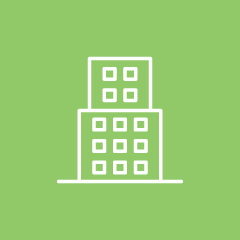

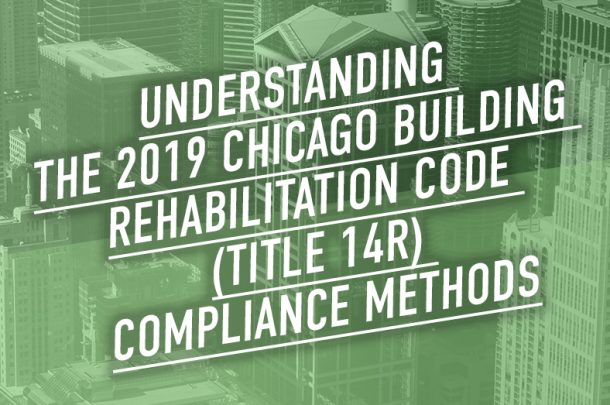
 Understanding Title 14R Compliance Methods
Understanding Title 14R Compliance Methods 
